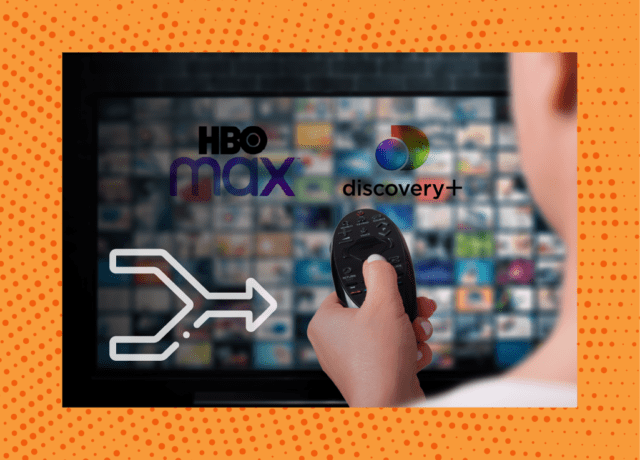Another day, another headline about OTT.
It reads: Discovery+ and HBO Max merge to form the next streaming giant.
The merger, announced by Warner Bros. Discovery (the parent company of Discovery+ and HBO Max) in Q3, will roll out across the US next summer.
The launch of this new platform, which comes on the heels of an equally attention-grabbing headline about Netflix advertising, has significant implications for users and advertisers.
What are those implications, and what will things look like in the world of OTT advertising’s newest player?
Ad spending data from the past year (August 1, 2021 – August 31, 2022) give us a pretty good idea.

The State of Advertising on Discovery+ and HBO Max
It remains to be seen how Warner Bros. Discovery will approach OTT advertising, especially as users threaten to cancel their subscriptions because of the rising ad loads elsewhere.
That said, with ads already a part of the go-to-market strategies of Discovery+ and HBO Max, the yet-to-be-named platform will inevitably have them, too—and advertisers will be eager to test them out.
Between August 1, 2021 and August 31, 2022, 450 companies spent more than $237mm on Discovery+ and HBO Max ads, with the allocation nearly even across the platforms (52% for HBO Max and 48% for Discovery+).
The average monthly investment was also close, with Discovery+ and HBO Max receiving $8.8mm and $9.5mm every month, respectively.
Although Warner Bros. Discovery isn’t struggling to attract advertisers to either of its owned platforms—it generated a combined $237mm between August 2021 and August 2022—the decision to merge was rooted purely in a desire to grow even more.
According to JB Perrette, the company’s CEO and President of Global Streaming and Interactive, “Putting all the content together was the only way we saw to make this a viable business.”
As Netflix and Disney+ gain market share, strategic shifts of this magnitude are sometimes necessary to stay competitive.
Ad strategies leading up to the decision undoubtedly gave them much-needed confidence.
Although 56% of advertisers were exclusive to Discovery+ (DISH, GSK, Wayfair, Cracker Barrel, Red Robin and Oliver Garden) and 19% were exclusive to HBO Max (Fidelity, Marriot, Hims and Hers, L’Oreal, and Unilever), the 25% who invested in both accounted for 73% of the total ad investment.
This small-but-mighty group of advertisers views both platforms in a favorable light, which should continue to shine once the new platform goes live.
Ad revenue should come with that (assuming there aren’t any radical changes to its content or advertising strategy).
The merger could also be a “white flag” for Discovery+.
While both platforms generate ad revenue, and Discovery+ could likely survive as a standalone platform, top advertisers overwhelmingly prefer HBO Max.
For example, of the $20.5mm invested by insurance company advertisers, 74% of those dollars went to HBO Max.
At the same time, of the $15.7mm invested by quick service restaurant (QSR) advertisers, 59% went to HBO Max.
Warner Bros. Discovery could have seen this as a sign that long-term success and sustainability were only possible with HBO Max.
Overall, the merger should pay dividends for all parties involved.
Users will get a one-stop shop for the content they love, while advertisers will get streamlined ad tools to launch, optimize, and measure campaigns across two historically siloed ecosystems.
These will likely be selling points as the media giant looks to woo advertisers and users away from other platforms.
The Future State of Advertising on Discovery+ and HBO Max
Just like the future of Netflix advertising remains clouded in mystery, there’s uncertainty around what this new-look ecosystem will look like once it goes live.
Thankfully, historical spending can give us a good idea of what it’ll look like and how advertisers will respond.
Lighter Ad Loads
In an online world saturated with ads, Discovery+ and HBO Max have both put a premium on their users.
While many of its contemporaries have perpetually increased their ad loads to drive revenue, these platforms have done the opposite—and that’s far from a surprise.
When HBO announced ad-supported pricing in June 2021, Julian Franco, Vice President of Product Management at HBO Max, said, “HBO has previously been a walled-off garden for the last 50 years…Stories are better received if you limit the disruptions during them.”
Ads are, of course, disruptions in every sense of the word.
Between January 1 and March 31, 2022, Discovery+ and HBO Max had the lowest ads per show and hour among their major competitors.
It’s fair to assume that the new platform will take a similar approach to ad loads.
With lighter ad loads, however, the pressure will be on JB Perrette and his team to consistently churn out hits—but that’s never been a problem for them before.
Superior Content
HBO Max has 87.6mm viewers, growing at 20.5% YoY.
Discovery+ lags with just 24mm users as of March, but it still has a loyal following thanks to content from big-time players like Animal Planet, TLC and HGTV.
Despite a strong foundation from which to build, Warner Bros. Discovery has its sights set much higher.
That target is 130mm global streaming subscribers by 2025 and $1b in earnings.
To get there, the new platform will have to be a roaring success and add roughly 40mm users in two years (keep in mind, the platform doesn’t go live beyond the US until 2024).
If anyone can do it, though, it’s Warner Bros.
With widely popular series like “House of Dragon” (the prequel to “Game of Thrones) and “Succession,” the content teams know what it takes to create hits.
If they can replicate that over the long haul, users will follow—and advertisers will follow them.
That said, the type of content may look different.
David Zaslav, CEO of Warner Bros. Discovery, said, “Our focus will be on the theatrical…And when we bring the theatrical films to HBO Max, we find they have substantially more value.”
If Zaslav flips the script, which is intriguing given the recent cancellation of its $40mm “Batgirl” movie, it’ll be interesting to see how ads come into play.
The Same Advertisers
If we’ve learned anything about the state of OTT advertising, certain advertisers are always itching to invest—those in finance, media, retail, QSR, technology, and restaurants/bars.
In 2021, most of the ad investment in HBO Max and Discovery+ came from advertisers in these industries.
It seems reasonable, then, that the same advertisers will flock to the new platform as the company streamlines its ad tools.
Other advertisers that may flock to the platform could come from automotive, pharmaceutical & medical, food, beauty, and services, as they’ve been big investors on other OTT platforms between Q3 2021 and Q2 2022.
As Netflix rolls out ads, Warner Bros. Discovery will watch how advertisers respond.
In the short term, advertisers will likely proceed with caution, especially those with smaller budgets.
As Netflix proves itself, however, ad dollars will follow, assuming prices aren’t through the roof.
It’s a safe bet that advertisers will approach this merger the same way—although they may be more willing to dive in, given the company’s proven advertising track record.
Warner Bros. is Making Moves
News of HBO Max and Discovery+ coming together was already the start of a major shakeup in the OTT world, but it could be just the start.
As Warner Bros. Discovery looks to gain ground, mainly on Netflix, Disney and Amazon, an acquisition may be on the horizon—this time involving Peacock.
While most of the streaming world is establishing itself, Peacock has lagged significantly, largely due to a late arrival and showing up without a revenue-generating machine.
According to one executive with knowledge of the situation, “Obviously, Peacock sucks…I think that’s Zaslav’s endgame.”
For clarification, “that” refers to the acquisition.
If Warner Bros. goes down that path, it likely adds millions of global users, a content library that includes The Office and Sunday Night Football, and of course, some ground on its rivals. Oh, and a ton of ad dollars, too.
For more insights, sign up for MediaRadar’s blog here.


